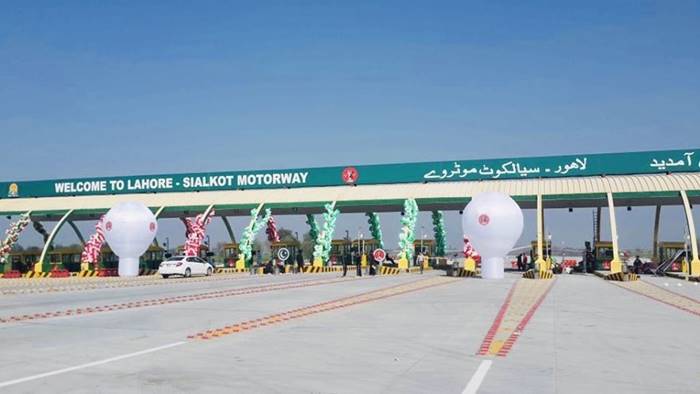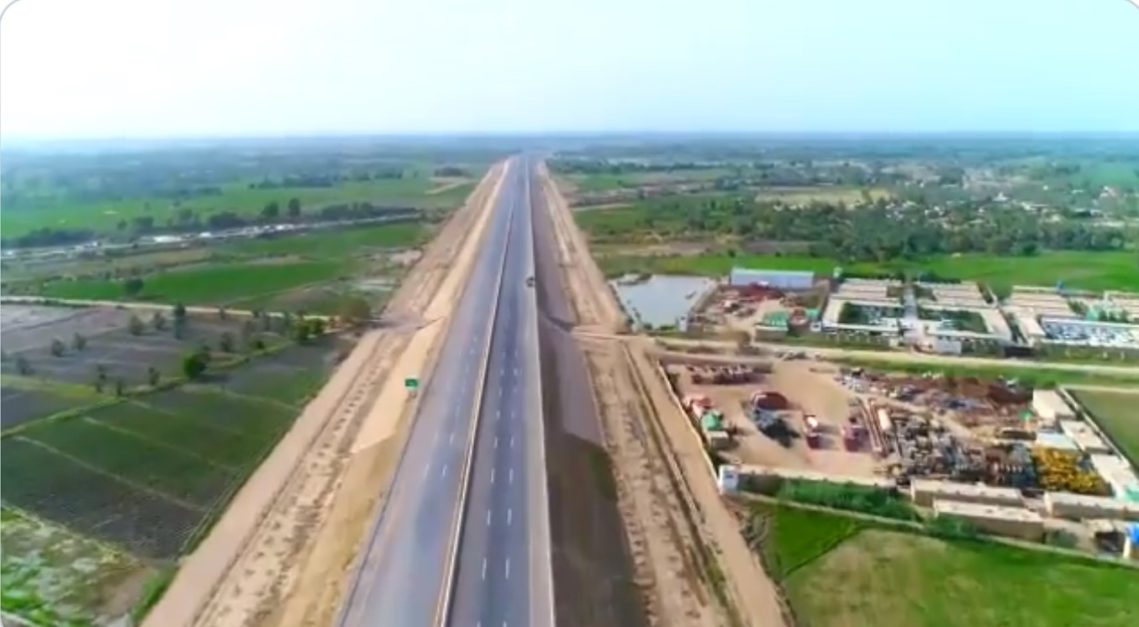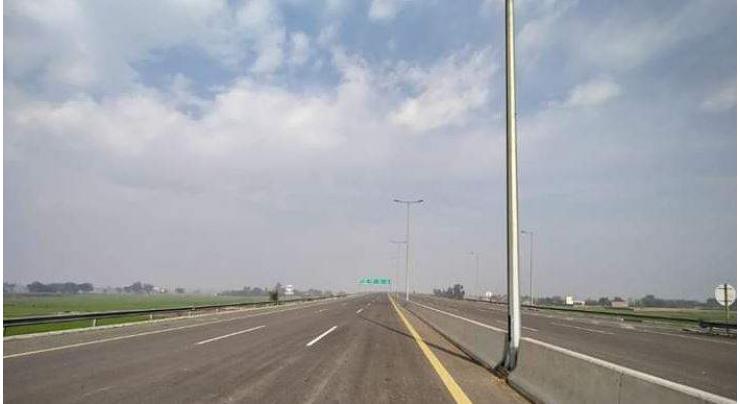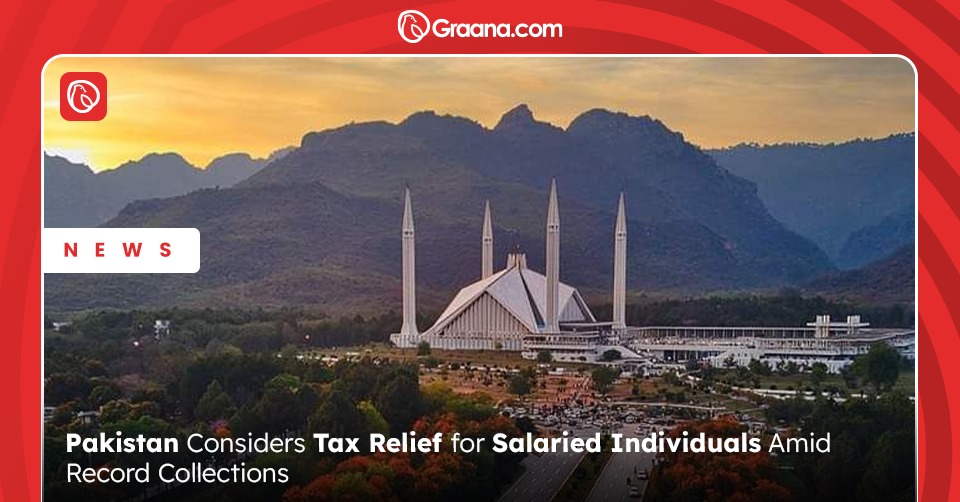The Lahore Sialkot Motorway is a vital infrastructure project that has significantly contributed to enhancing connectivity and promoting economic growth in Pakistan. The new motorway, spanning a distance of approximately 103 kilometres, connects Sialkot and Lahore.
Graana.com delves into the importance, features, benefits, and impact of the Lahore Sialkot Motorway on the region’s transportation, economy, and overall development.
Historical Background and Significance
The idea for the Sialkot-Lahore Motorway (LSM) was initially introduced in 2006 by the then-Chief Minister of Punjab, Choudhry Pervaiz Elahi. The project started during the tenure of Ex-Prime Minister Imran Khan. The National Highway Authority (NHA) selected the Frontier Works Organization (FWO) and a foreign firm to undertake the project.
The Significance of the Lahore-Sialkot Motorway
The Lahore Sialkot Motorway serves as a crucial link between the two major cities. It has become a vital part of the country’s transportation network, enabling efficient movement of goods, services, and people. The (LSM) motorway plays a pivotal role in connecting the industrial hub of Sialkot with Lahore, a major economic and cultural centre.
Features and Infrastructure

The Sialkot-Lahore Motorway, spanning 103 kilometres, boasts a four-lane highway with modern amenities. With nine interchanges, eight flyovers, 20 bridges, 18 underpasses, 12 subways, 23 cattle creeps, and 207 culverts, this motorway ensures smooth traffic flow and a safe driving experience.
Running parallel to the historic Grand Trunk Road (GT Road), the motorway passes through significant locations like Kamoki, Gujranwala, and Daska motorway interchange, and ends at Sambrial. Its connectivity with the M2 Motorway and the N5 National Highway through the Lahore Link Road near Kala Shah Kaku further enhances accessibility for commuters.
Construction and Development of the Motorway
The construction of the Lahore Sialkot Motorway commenced in 2018. The project involved extensive planning, engineering, and execution to ensure a robust and high-quality infrastructure. The motorway was developed with the aim of reducing travel time, improving connectivity, and boosting economic activities in the region.
In addition, the Lahore Sialkot Motorway serves as the initial segment of the M-11 motorway, which is designed to run alongside the M-2 motorway from Lahore to Islamabad. Currently, the construction of the M-12 extension from Sialkot to Kharian (via Gujrat) is underway as part of the next phase.
The final phase, known as M-13, will connect Kharian to Rawalpindi and intersect with the M-2 motorway through the Rawalpindi Ring Road. This comprehensive development plan aims to improve connectivity and streamline travel between these major cities.
Benefits of the Lahore-Sialkot Motorway
The motorway brings numerous benefits to the region. Firstly, it reduces travel time between Sialkot and Lahore, providing a faster and more efficient transportation route. It benefits commuters, businesses, and industries reliant on the timely transportation of goods.
Additionally, the motorway contributes to the overall development of the region, attracting investments and fostering economic growth.

Impact on Regional Economy
The Lahore Sialkot Motorway has had a positive impact on the regional economy. It has improved accessibility to markets and facilitated trade activities, especially for industries based in Sialkot. The motorway has opened up new avenues for businesses, allowing them to expand their reach and increase their competitiveness. Furthermore, the improved connectivity has stimulated tourism, leading to increased revenue and job opportunities in the region.
Furthermore, the Sialkot-Lahore Motorway project includes plans for three industrial zones and two universities. These forward-thinking initiatives aim to stimulate economic activities, job creation, and investment opportunities along the motorway corridor.
The establishment of industrial zones and educational institutions along the route will not only enhance the socio-economic landscape of Sialkot but also benefit the surrounding rural areas.
Improved Connectivity and Travel Experience

The motorway has significantly enhanced connectivity between Sialkot and Lahore. It offers a safe, comfortable, and reliable travel experience, attracting more people to utilise this route for their journeys. The well-planned interchanges and service areas along the motorway provide convenience and accessibility to travellers, ensuring a seamless and enjoyable travel experience.
The improved connectivity has facilitated the movement of goods and services, reducing transportation costs and enhancing trade opportunities for businesses in Sialkot and Lahore.
The shortened travel time has benefited commuters, enabling them to reach their destinations swiftly and comfortably. Additionally, the motorway has attracted investment and stimulated economic growth, encouraging industries and businesses to establish themselves along the corridor.
Future Prospects and Expansion Plans
The Lahore Sialkot Motorway has laid the foundation for future development and expansion. There are plans to extend the motorway further, connecting it with other major cities and regions in Pakistan. This expansion will enhance regional connectivity, promote trade, and boost economic activities across a wider area.
The completion of the LSM marked the first section of the M-11, which will eventually run parallel to the M-2 Motorway from Lahore to Islamabad. The future extensions of the M-11, known as the M-12 and M-13, further highlight the significance of this transportation network.
M-12 Motorway
The M-12 motorway also referred to as the Sambrial-Kharian motorway, is presently under construction with the project initiation taking place in July 2022. The primary objective of the M-12 is to establish a direct link between Sambrial and Kharian.
Spanning a distance of 69 km (43 mi), this motorway will feature 5 interchanges strategically placed along its route. Additionally, it will include a service area to cater to the needs of travellers. Notably, the M-12 will also incorporate a remarkable 1 km (0.62 mi) long bridge that will span across the River Chenab, facilitating seamless connectivity.
Designed as a four-lane motorway, the M-12 will possess the potential for future expansion to accommodate six lanes, allowing for increased traffic capacity. It has been planned with a target design speed of 120 km/h (75 mph) to ensure efficient and smooth transportation. The expected completion timeframe for the M-12 is projected to be around 2 years.
M-13 Motorway
The M-13 motorway, also known as the Kharian-Rawalpindi motorway, is currently under construction with work commencing in September 2022. The purpose of the M-13 is to connect Rawalpindi with Kharian. Spanning a length of 117 km (73 mi), this motorway will feature 8 interchanges, 2 service areas, and 26 bridges.
Notably, one of the bridges will extend over the River Jhelum, while two twin-tube tunnels measuring 1.3 km (0.81 mi) and 0.6 km (0.37 mi) respectively will traverse the Salt Range between Dina and Sohawa.
Designed as a four-lane motorway, the M-13 will have the potential for future expansion to six lanes. It is being constructed with a target design speed of 120 km/h (75 mph) and is projected to be completed within a timeframe of 2 years.
Upon completion, the M-13 will significantly reduce travel time between the capital cities of Islamabad and Lahore by approximately one hour compared to the existing M2 Motorway. Additionally, it will help alleviate congestion on the parallel N5 Highway by diverting traffic onto the motorway. The M-13 will also serve as a link to the M2 Motorway through the Rawalpindi Ring Road.
Conclusion
The Sialkot-Lahore Motorway stands as a game-changer for the region, with its efficient infrastructure and strategic location. By significantly reducing travel time between Sialkot and Lahore, it has enhanced connectivity and facilitated economic development. The motorway’s well-designed interchanges, bridges, and underpasses ensure smooth traffic flow, benefiting both commuters and businesses.
FAQs
Here are some of the FAQs related to Lahore Sialkot Motorway
How long is the Lahore Sialkot Motorway?
The Lahore Sialkot Motorway spans approximately 103 kilometres.
When was the construction of the M11 motorway started?
The construction of the motorway was completed in 2018.
How does the motorway benefit the regional economy?
The motorway improves accessibility, facilitates trade activities, attracts investments, and stimulates tourism, leading to economic growth in the region.
What is Lahore to Sialkot Distance via Motorway?
Lahore to Sialkot Distance via Motorway is 2 hr 7 min (132.2 km) via Sialkot – Lahore Mwy/M-11.
For more information about motorways in Pakistan, visit Graana blog.




